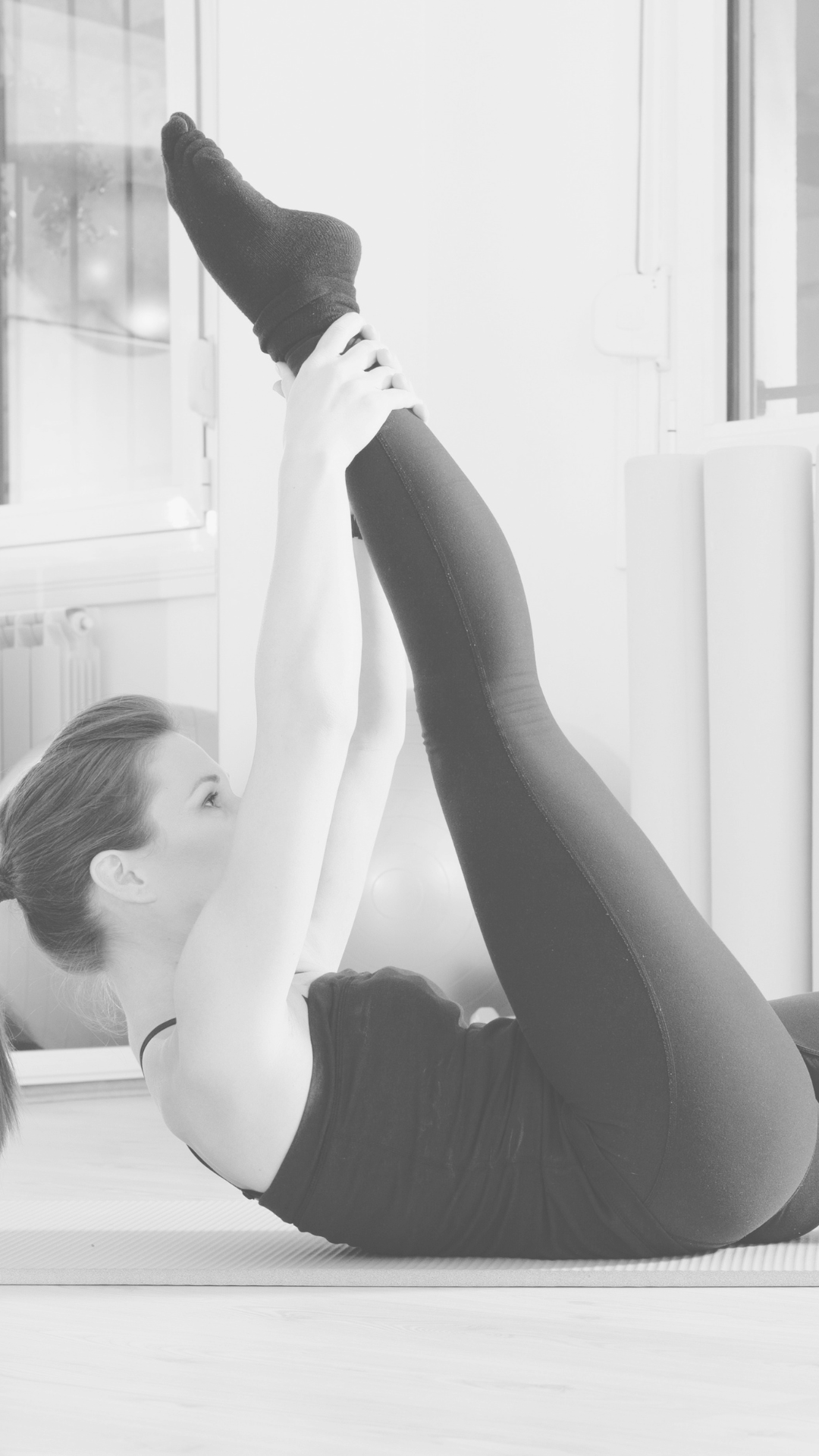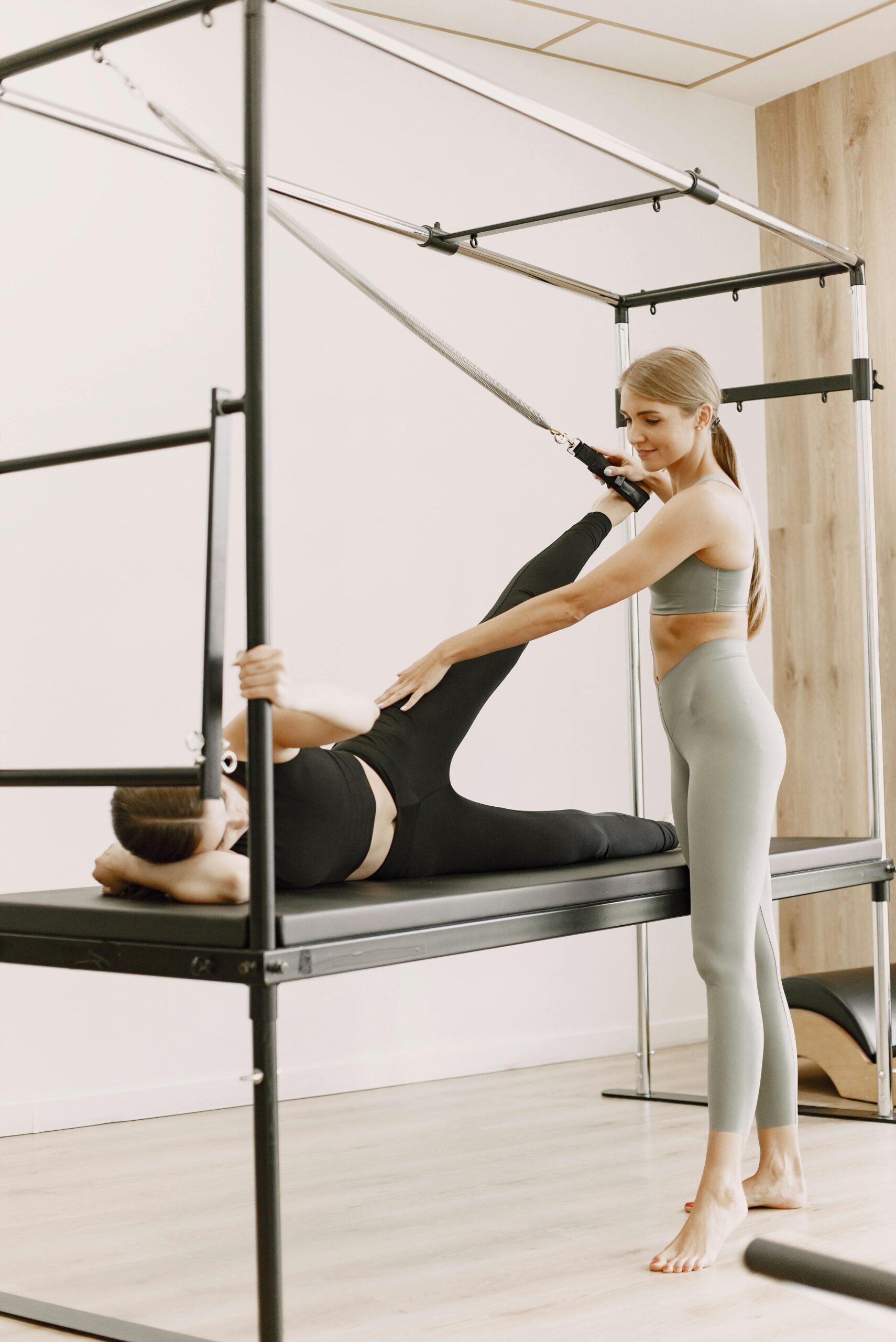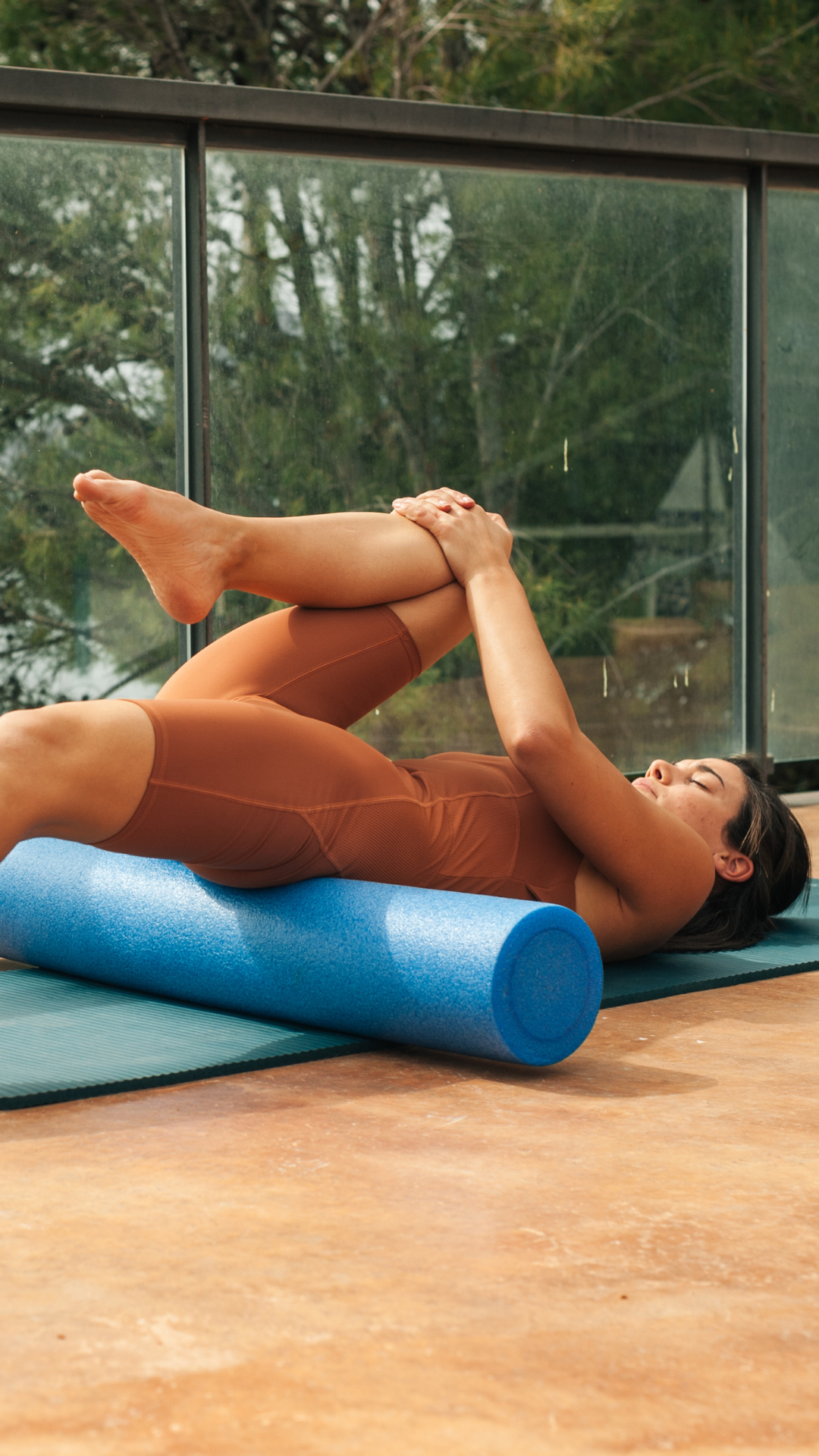Cueing for instructors, both new and experienced, can be extremely challenging. For many of the instructors that I mentor, they agonize over what is “right” and what is “wrong” to say. That can partly be due to their instructor trainers or mentors putting them in a box of rules of what is acceptable to say and what they should never say. It can also be due to a lack of confidence as you learn a new skill and constantly worry about how to be clear for your clients.
My philosophy is often different than other instructors, because I don’t ever put limits on my students on what they can and cannot say. Many teachers say things like “you should never say knit the ribs together” or “belly button to the spine” or “tuck the hips”. The list goes on and on. Now those cues wouldn’t be my first choice, but what makes a cue “good” is if it gives you the result that you want to see from your client.
I used to train this client who had a really stiff lower back from two terrible car accidents, and she just didn’t have the awareness of how her hips could move. I was trying to teach her how to imprint her pelvis (do a posterior pelvic tilt). I tried all the typical cues that normally work and I would just watch her hips and nothing would happen. So finally, I decided to use the cue “Press your lower back into the mat.” Something I normally would never ever say to a client because it would typically result in someone squeezing their glutes to do the movement or pushing into their feet or someone jamming their back into the mat really forcefully. Guess what? For her it was the magic cue. She didn’t engage her glutes to help her. She didn’t excessively press her back down. I got the exact movement that I wanted, so it makes it a good cue for her even though it usually isn’t for everyone else.
I wasn’t always brave enough to break the Pilates rules and use a cue that is often frowned upon. I have one of my early mentors to thank for that! She gave me the freedom and the permission that I needed to really be present with my clients and not feel restricted by cueing rules, and I hope that after reading this you experience the weight of limitation being lifted off of your shoulders.
I was a newer instructor at the time, about 2 years into teaching clients. I traveled out of state to take a training course and I scheduled a private session with the world renowned Pilates Master Trainer who was teaching the course. I was having bad issues with my lumbar spine and I decided to treat myself to a private session. It was one of the best decisions I’ve ever made! I learned so much in that one hour, not just about my own body, but also about the skills of being a great teacher.
She was cueing me through an exercise and the cue didn’t give her the result that she wanted to see. She said “Sorry that was a bad cue. Try this…” And she did that all throughout the session on different exercises if her words didn’t get me to do what she wanted. How could anything out of this master trainer’s mouth ever be “bad”. It just made me respect her even more for saying that. She didn’t stress when her cue didn’t work for me, she just tried a new one. I left that session with so much confidence as a new instructor because if she could experience a cue not working as she intended with her 20+ years of experience, then it is okay for me to go through that process too.
There was nothing at all wrong with her cue, it just didn’t work for me. You know why? Because everyone’s brain is different and interprets words differently. Everyone’s body is different and we all experience movement differently. She didn’t panic, she just quickly thought on her feet and tried something different. This is why in your training you are taught to practice using different types of cues, so you can be prepared and also experiment to see what your client responds best to.
Teaching & cueing is an art. It is something that you will always be working on and will always be evolving, no matter how long you have been teaching. Remember to have fun, try new things and don’t worry if a cue doesn’t work as planned. Your clients love you for your personality and how you make them feel. They will only call you out for saying something wrong if you lose count during the hundred exercise and try to make them do an extra set!
If you need help mastering your unique teaching style, book a free consultation call today!
Welcome Friends
HELLo, I’m Alyssa
Movement is my life! My biggest passion is understanding the human body and I want to share it with you! Coming from a ballet background, I'm no stranger to injuries and the struggles of rehab, but I wouldn't change a thing because they led me to find Pilates and inspired me to do what I'm doing today.
I'm here to help you feel stronger, move better, recover from and reduce your risk of injuries, & exceed your performance goals.
If you love movement, anatomy and you want to laugh & enjoy your workouts, you're in the right place!
Signature program
Heal Your Hips
This is my 9 week program that will rebuild your hip health from inside out. The results speak for themselves - if you're experiencing hip discomfort, this is where to begin.
BEST THE Blog
of
In this post, I break down why a holistic, full-body approach is the key to lasting hip health—and how to start improving your mobility, strength, and comfort today!
Have you ever felt like you were doing an exercise perfectly, but your instructor keeps giving you the same correction? And you get frustrated because in your mind you’re not doing anything wrong? You’re not alone! This happened to me all the time in dance class. My ballet teacher always told me to straighten my […]






+ Show / Hide Comments
Share to: